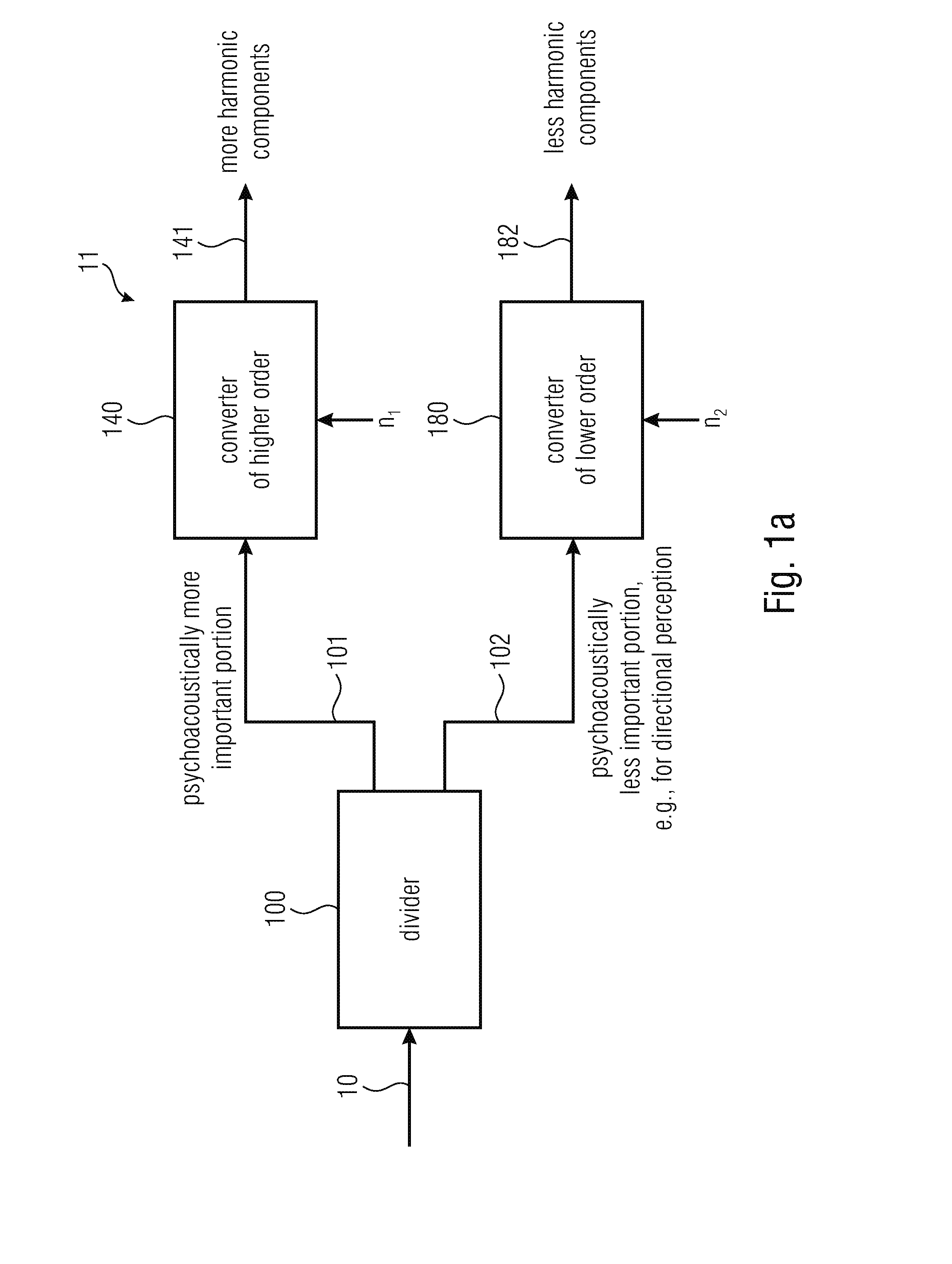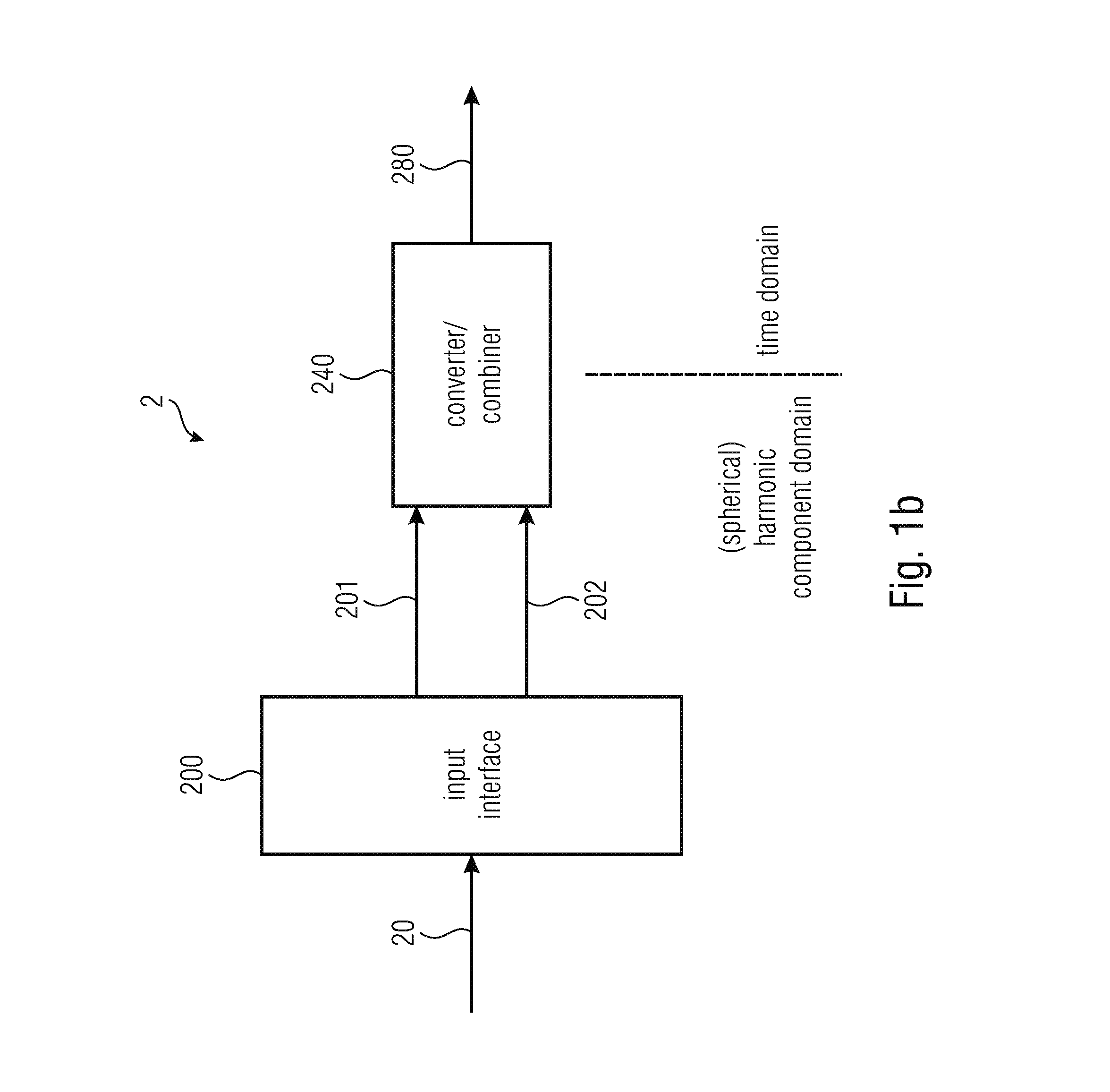Method and apparatus for compressing and decompressing sound field data of an area
a sound field and data compression technology, applied in the field of audio technology, can solve the problems of high energy consumption by intensive computation effort, uncritical lossy compression, in particular in mobile devices, etc., and achieve the effects of high accuracies, long computing time, and high spatial accuracy of description
- Summary
- Abstract
- Description
- Claims
- Application Information
AI Technical Summary
Benefits of technology
Problems solved by technology
Method used
Image
Examples
Embodiment Construction
[0064]FIG. 1a shows a block diagram of an apparatus or a method for compressing sound field data of an area as they are input into a divider 100 at an input 10. The divider 100 is configured to divide the sound field data into a first portion 101 and a second portion 102. Above this, a converter is provided having the two functionalities indicated by 140 or 180. In particular, the converter is configured to convert the first portion 101 as indicated at 140 and to convert the second portion 102 as indicated at 180. In particular, the converter converts the first portion 101 into one or several harmonic components 141 of a first order, while the converter 180 converts the second portion 102 into one or several harmonic components 182 of a second order. In particular, the first order, i.e., the order underlying the harmonic components 141, is higher than the second order, which means, in other words, that the converter 140 of a higher order outputs more harmonic components 141 than the...
PUM
 Login to View More
Login to View More Abstract
Description
Claims
Application Information
 Login to View More
Login to View More - R&D
- Intellectual Property
- Life Sciences
- Materials
- Tech Scout
- Unparalleled Data Quality
- Higher Quality Content
- 60% Fewer Hallucinations
Browse by: Latest US Patents, China's latest patents, Technical Efficacy Thesaurus, Application Domain, Technology Topic, Popular Technical Reports.
© 2025 PatSnap. All rights reserved.Legal|Privacy policy|Modern Slavery Act Transparency Statement|Sitemap|About US| Contact US: help@patsnap.com



